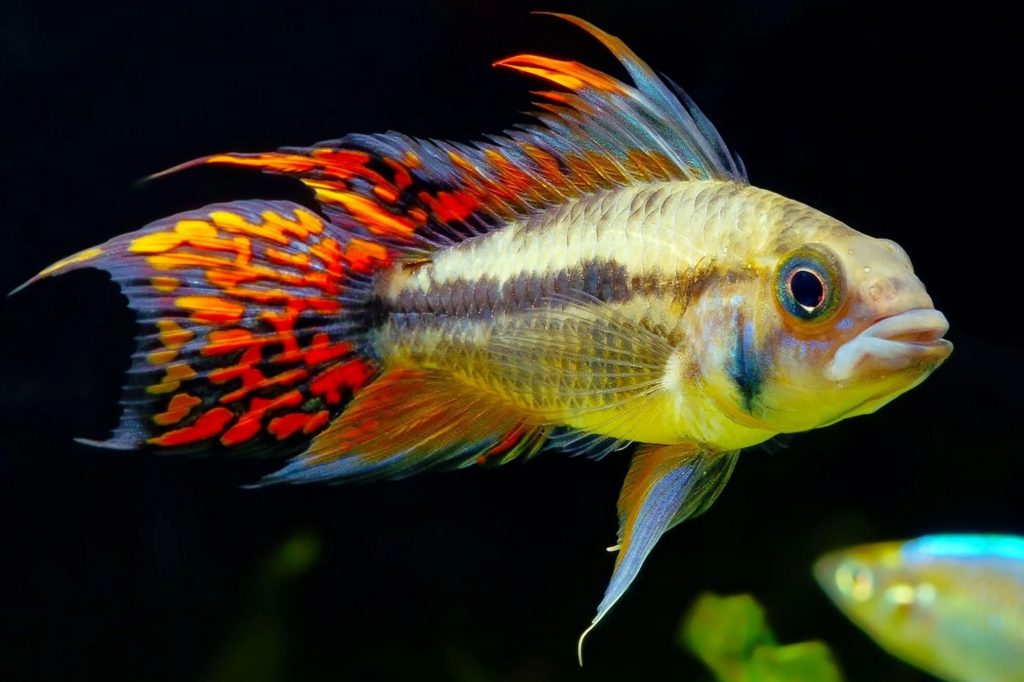Apistogrammas exist in a wide variety, most originating along the Amazon River, where they live in small, slow-flowing streams.
Apistogrammas derive their common name from the name of the region in which they were first identified or the first person to officially describe them (then cacatuoides, agassizzi, Borelli, Nijsseni, Panduro, and so on).
Behavior
These little cichlids will roam around the pond, they like to hide occasionally, so provide lots of plants and caves.
Maximum Size and Longevity
The maximum size of Apistogrammas varies depending on species.
On average, females can vary between 2.5 cm and 5 cm at most. Males range from 5 cm to 7 cm at most.
The average lifespan of Apistogramma is about 5 to 8 years if kept happy and healthy and in good water.
Water quality
Apistogrammas live naturally in soft acidic water, use this as a guideline when defining an Apistogramma as fauna for your aquarium.
Aquarium
pH: 5.5 – 7.0
GH: 30 – 100 ppm
Temperature: 24°C – 28°C
food
Apistogrammas are omnivorous and accept a wide variety of foods, including commercial foods such as flakes and bits.
Apistogrammas feed mainly from the top of the tank.
Compatibility
Apistogrammas can become quite aggressive when they are breeding, but most of the time they will be peaceful.
They are best kept with other small cichlids like South American Dwarf Cichlids, and can sometimes be kept with Discus and larger Tetras due to their water requirements.
Colors and Varieties
There are many different types of Apistogrammas, which come in many different colors and shapes. Some Apistogrammas that are commonly available include agassizzi, Borelli, cacatuoides, panduro, nijsseni.
Sex
Apistogrammas are very easy to differentiate between sexes, males have many brighter colors than females, their fins are longer and grow slightly larger and thinner than females.
Females are smaller and fatter in the belly area and have shorter fins. Females are mostly in shades of brown, silver or gray, with black highlights and bars. However, when they start to reproduce, they sometimes mimic male coloring and become brighter and more colorful.
General information
With “Nano Tanks” becoming more and more popular these fish are also becoming popular.
They don’t need a lot of water as they are very small, peaceful cichlids.
